What Business Owners Need to Know Before Jumping Into Digital Marketing.
As entrepreneurs, planning to hire an online marketing agency or a freelancer is quite a daunting task. We must be aware of the risks and know the fundamentals of how internet marketing works for us to grasp the overall structure on how to use the digital world as a marketing platform.
To do this, we first need to understand just how big the online market for your business is. By answering a few questions, we will be able to keep ourselves informed and knowledgeable on the process of building up your business’s online presence, reaching out to your audience, engaging your customers, and essentially boosting your sales.
Gathering Data
Data, and knowing how to decipher it, is an immensely powerful component of online marketing. For a business to succeed in its campaign online, you need to be able to gather enough data to base your methodical processes and do factual tests on.

Photo by Adeolu Eletu on Unsplash
Knowing this will not only help you decide what the best options are for your campaign, but it will also give you an overall view of:
- What is happening in the market,
- Where you can offer your products/services, and
- What the possible marketing strategies can you implement.
Some questions you can find out the answers for:
1.) How many internet users are there?
According to Website Hosting Rating as of January 5, 2024 there are 5.30 Billion internet users across the planet Earth.
That is equivalent to more than 66% of the world’s population.
Now what percent of that is your market as a business owner?
It really depends on your target market, your sales channel, and your product.
Let us say you are an organic coffee seller, and you plan to sell your product to the North American market via Amazon.
In a nutshell, you need to gather data and find out:
- The number of internet users or traffic Amazon gets from North America.
- How much traffic does the coffee industry get on Amazon?
- How many coffee shops are there in North America? Because the more coffee shops in the area the more coffee drinkers there are, the more customers you can get.
- How many competitors do you have that sells the same product in the same market?
- How many Amazon Affiliate sellers are there within your niche?
By gathering those numbers, you will be able to use that data to recognize your possible market and that will be essential to your campaign.
2.) Just how many websites are active?
Now if you are very curious on just how many websites are there on the internet, then you are not alone.
As an online marketing creative studio, we at Ironclad Creatives have done some research and what we found out was that as of December 2023 there are over 1.09 billion websites on the web and that number is increasing every minute!
But the number of active websites according to Siteefy is around 18% of that number which means there are only 192 million active websites in the world wide web.
3.) How many users are searching for keywords related to your business?
It is vital in your online marketing campaign that you target keywords that have a high volume of traffic for you to increase the number of audiences that go to your website.
By using tools such as Google Trends you are able to do just that!
With Google Trends you can find out how much a certain keyword is searched on Google and it also allows you to target a country.
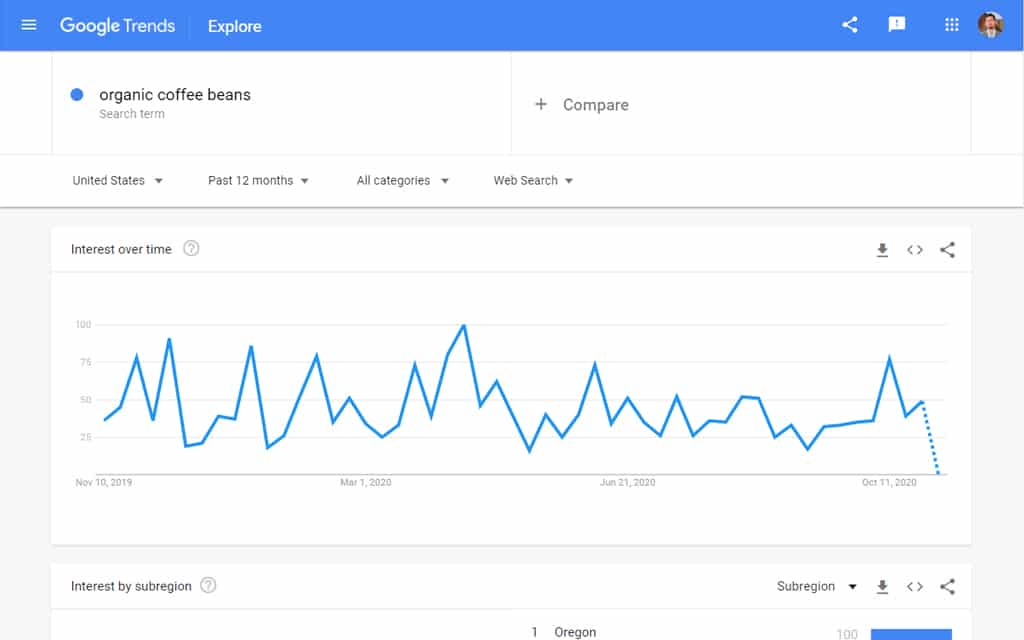
So if we try to input “organic coffee beans” on Google Trends it will show us a graphical data analysis of how many people have typed in those exact keywords on Google at a certain length of time, by region and will also show related topics and queries.
This will give you the right information to know which set of keywords to spend time to optimize and rank on.
4.) What are your competitors doing?
- By using tools such as SEMRush and Ahrefs you can find out and track your competitor’s online market share and ranking distributions based on the keywords they are ranking for.
- You can also check out Ubersuggest by Neil Patel to analyze your competitor’s rankings, what keywords they are ranking for and what are their estimated traffic.

Building your website
As an entrepreneur, you might have been approached by a freelance web designer or even an agency that promises you a professional, beautiful and effective website the converts. But you said: “No, maybe in the future”. A few years later you ask again and the price has doubled, well that is how fast the technology and costs of websites progresses and evolves. If you only made that right decision of investing, you would have already covered the expenses of building your website from your ROI. Your business would have grown exponentially with returns! You would have not paid twice or three times the cost a few years ago!

What you need to get your website up and running:

Photo by Richy Great on Unsplash
1.) Domain Name
A domain is the URL or a “web address” that you and your customers need to input on the browser address bar to visit a website. A registered domain is unique and nobody else can use it, it is by essence the same as a street address. There are several versions of a domain. The most popular one is a .com.
You can buy a domain on popular hosting and domain registration websites such as Siteground , Cloudways, and Flywheel. As a team of website designers and developers we suggest you buy from these companies with solid customer support.
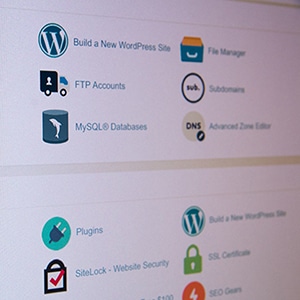
Photo by Stephen Phillips – Hostreviews.co.uk on Unsplash
2.) Hosting Server Account
A hosting server is the storage of all the files of your website. This will be the house in which your software or system is created, your database is stored, and files are saved. Most hosting companies offer shared, VPS, dedicated and cloud hosting.
We recommend buying your hosting account from Siteground, Flywheel or Cloudways. We have proven these companies to be reliable, fast, secured and have great customer support time and time again. Never have they faltered when we use them for our projects and our own website as well.

Photo by Kaitlyn Baker on Unsplash
3.) Written Content
“Every great website, comes with great compelling content.” Sounds cliche’ and movie-ish but its true! Your content should be written in a way that attracts your audience to consume and persuade them to stay on the page, learn what your product or service can do to make their lives easier, and of course click on that buy button!
A great written content will also help your Brand Authority and Presence which will allow your website to rank in major search engines such as Google and Bing.

Photo by Jamie Street on Unsplash
4.) Photos and Graphics
“A picture tells a thousand words.” This is a fact that is also accurate for websites. Even with content that’s enticing and interesting, a truly great site will include images that will draw visitors in even more, while enticing them to connect with your content.
Whether you are using photos of your products, your services or using illustrations to show what your brand is all about, it is often best to accompany your written content with visual representations that will help the audience understand what you are trying to convey.

Photo by Kushagra Kevat on Unsplash
5.) Videos
Although videos are optional, it is still one of the easiest ways to get your visitors engaged with you and your brand. Not only are they looking to know more about your business, but they are also wanting to do it in the most convenient way possible. With one click of the play button you can show them your story in a way that is most entertaining and convincing.
You can also add a short clip to your Hero section background that will quickly show your audience your brand’s culture, work and goals.
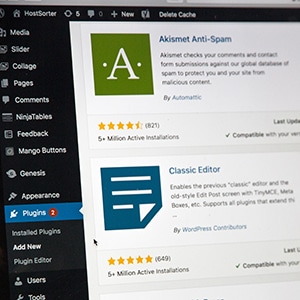
Photo by Stephen Phillips – Hostreviews.co.uk on Unsplash
6.) Content Management Software
As an entrepreneur, often you would want to do-it-yourself. Adding, editing, or updating the pages on your website without going through codes and syntaxes. This is where a content management software comes in.
With a good software you can navigate through a user-interface dashboard that is easy to use and user-friendly and allows you to modify your website’s pages without difficulty.
What software is best to use for your website?
You can say that WordPress is the most popular content management system that is used for websites today. Whether you need an online store, a business portfolio, a blog, a membership website or just any website you can think of; WordPress is a platform used buy millions upon millions of websites.
According to Whoishostingthis.com as of February 2020 35% of websites are powered with WordPress. Because of its flexibility and ease-of-use, most website owners and developers prefer WordPress over other platforms.

Photo by Fikret tozak on Unsplash
Why are we using WordPress?
If you don’t know what WordPress is, you are missing out on one of the most popular software used to build and run a website. It was launched by Matt Mullenweg on May 27, 2003. Today a good percentage of the total live websites on the internet is ran using WordPress. WordPress was originally intended for blog-publishing but has evolved into a full blown content management software that allows you to build any type of website you can imagine.
1.) WordPress is easy to use
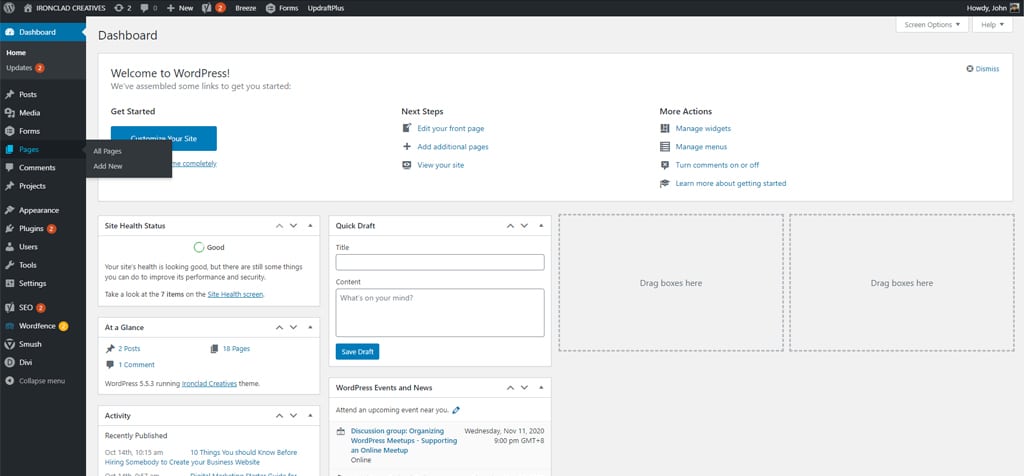
With a very intuitive and user-friendly dashboard, WordPress allows both developers and non-developers to easily add, edit, delete, update a website’s content. Whether it be adding photos, editing or deleting pages and posting articles; WordPress allows a user to do it with just a few clicks.
2.) Drag and Drop Page Builders. Wix vs. WordPress
Sure you have seen Wix.com’s drag and drop features on Youtube as it is one of the most popular and overly advertised page builder in the market, so why are we using WordPress?
There is a plethora of reasons why developers would advise you to stay away from Wix but here is a quick list:
- Ownership : Simply put to it that with Wix you are actually just renting your online territory while with a WordPress website powered on a hosting server you completely own it.
- Pricing : WordPress is open source while Wix is premium. With WordPress most of the time you only pay your developer once to set up your website and then your hosting and domain every year. While Wix has multiple plans you can choose from but at the end of the day USD 12.50/month for something you don’t own.
- Closed-source : Wix is not compatible with other tools that are essential to your online marketing campaign because they are a stand-alone platform. You cannot use plugins such as Yoast that allow better Search Engine Optimization and many other extensions that would allow you to have a more dynamic platform.
- Ease of Use: For sure Wix has its own page builder but with WordPress page builders today such as Divi and Elementor, they allow you better control and more flexibility when it comes to the design and functionality of your website.
- Search Engine Indexing: WordPress has been at the forefront of blogging platforms when it comes to being SEO(Search Engine Optimization) friendly. In fact, there are several Forbes 500 companies that use WordPress such as: Microsoft , Sony and Target to name a few.
What are the Best WordPress Theme Page Builders available?
I am sure that you have been doing a lot of research in this area if you are a business owner who would love to DIY and create your own Website. But which page builders do we recommend here at Ironclad?
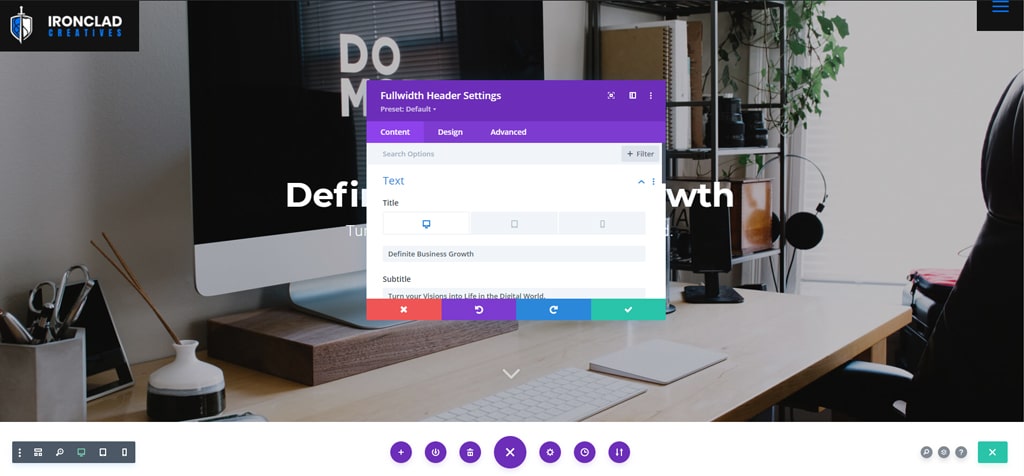
As a 10-year veteran in the Web Design and WordPress space, I highly recommend choosing from the following WordPress Theme Page Builders:

It has a back-end and front-end drag-and-drop builder that allows you to create stunning websites without handling codes. It boasts of 800 page templates with up to 8 page layouts that gives you a cohesive look and feel all throughout the pages of your website.

They have a Free Trial version and has over 50 content modules for the Pro version.

Although limited in its features compared to the other leading page builders, it is still one of the go-to page builders used by developers and DIY enthusiasts from all over the world.

Here at Ironclad Creatives we have used all four page builders and have worked on hundreds if not thousands of WordPress websites using them. Although we use Divi 80% of the time, we think each page builder has its pros and cons. By trying out each of these themes on your own projects you will be able to compare them and decide which one suits you best.
3.) WordPress is Flexible
As an opensource content management software using PHP and MySQL as its core programming language and database service, WordPress is very flexible.
In its early years WordPress was majorly for blogging but now it has become the number 1 content management software which can be used for any type of website from informational brochure, E-commerce, forums, multi-level marketing, sales funnels, learning management systems, membership websites, multi-vendor and everything in between.
4.) Search Engines Love WordPress
Have you ever wanted to research and learn about a product before deciding to go to the nearest store to buy it? You are not alone. Most buyers now a day’s search for keywords such as “Best Coffee Espresso Machine” before deciding which brand to go for.
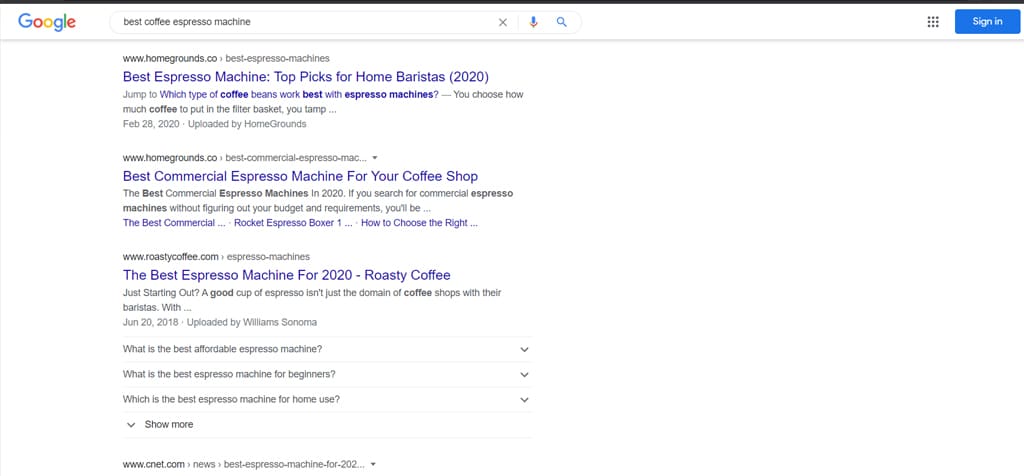
Now try that on Google. About 3-4 websites on the 1st page uses WordPress. You can check by copying their url and using Is it Wp to scan and confirm it.
That proves how search engines such as Google easily crawl WordPress powered websites. This is also possible if your business uses WordPress for your website.
Search Engine Optimization
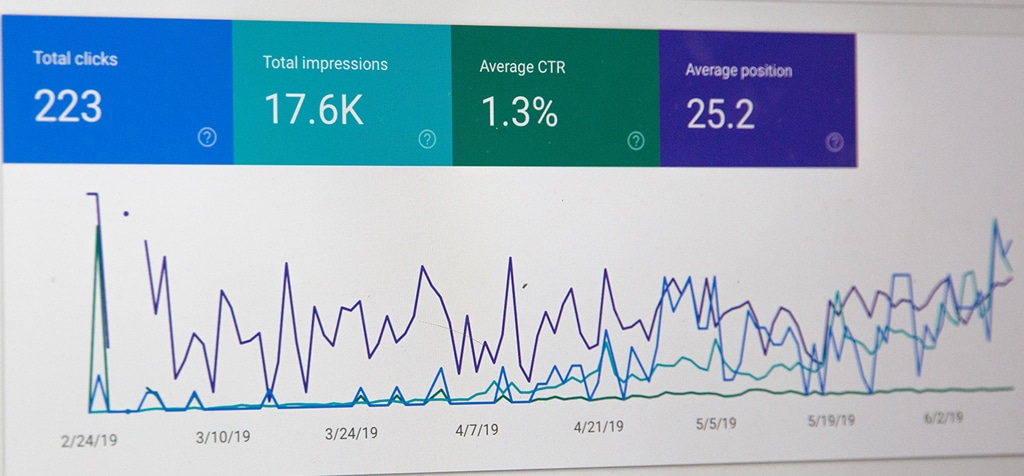
Photo by Stephen Phillips – Hostreviews.co.uk on Unsplash
We all want to rank on the 1st position of Google but how can one achieve that? That is where SEO comes in.
There are 2 important sides to SEO;
- One would be the search engine algorithm itself where the search engine spiders crawl and index the content on your website in order to calculate thousands of factors that determine which content is most likely to answer a search query that will help them decide the rank of that content on the Search Engine Results Page (SERPs).
- And the other one would be understanding what people are searching for online, the answers they are looking for, the words they are typing in the search engine box, and most of all; the type of content they are wanting to consume.
Identifying your Audience
First you need to identify who are your audience? Are you a B2B (Busines to Business) or B2C (Business to Consumer) provider? Are you both?

Photo by Nicholas Green on Unsplash
Let us say you are selling hand-crafted wooden furniture in New Zealand and you want to become the go-to provider when it comes to designing custom wood furniture in your area.
Your audience ranges from homeowners, renters, interior designers, cafés, restaurants, hotels, and resorts. By identifying the percentage of each of your audience niches you will be able to analyze which category you should prioritize in your marketing campaigns, which ones need more effort or which products you can restrategize or completely abandon.
On your website this can be done by grouping your products based on your audience category. This way you can use the visits and/or sales data of which you will see what the percentage of each category your customers belong to.
Tools of the Trade
One of the best tools to identify your audience as an E-commerce store is by using Woocommerce or Shopify for your online store as they both use data analytics to help you identify the numbers for each audience group.
Other tools that are vital to use for each website is the Google Search Console , Google Analytics and Google Tag Manager
Google Search Console

Can provide data analytics on the following:
- Which keywords, your website pages are ranking for on the Search Engine Results Pages.
- Which pages your website are getting visits and impressions on for certain keywords.
- Your website page’s click-through rate.
- Your website page’s position on Google.
Google Analytics

Can provide data analytics the same as Google Search Console and more in fine detailed graphs.
- Realtime visitor tracking
- Audience demographics, interests, locations and behavior
- Which device or browsers they are viewing your website from.
- Which channel did you acquire your visitors from.
- Set conversion goals, e-commerce and sales funnel tracking.
Google Tag Manager
Allows you to manage and deploy marketing tags such as:
- User clicks
- Scrolls
- Form abandonment
- Video views
- and Exit link clicks
It is used together with Google Analytics to track user data by adding tags and firing triggers that allows you to track user behavior within your website.
Create Compelling Content
Creating valuable content for your audience will always be the most important factor that can help your website establish its brand and online marketing presence which in turn will rank you in the 1st page of Google. No amount of optimization can make a non-engaging content rank on the top of the Search Engine Results Pages (SERPs) that have high volume traffic.
One of the most effective way to capture your audience’s attention is to give free education and share your expertise. You can help them solve problems that they encounter by training them through video tutorials, podcasts and just like this article, written content.
You can also do guest-posting by reaching out to your colleagues, industry influencers or leaders and offering your original content to post on their blog or vlog in return for a profile box and attribution link at the end of the article.
On-page SEO
By optimizing the pages of your website you can improve your website’s search engine presence and improve organic traffic. But the utmost importance of publishing relevant and high-quality content is highlighted when it comes to SEO itself.
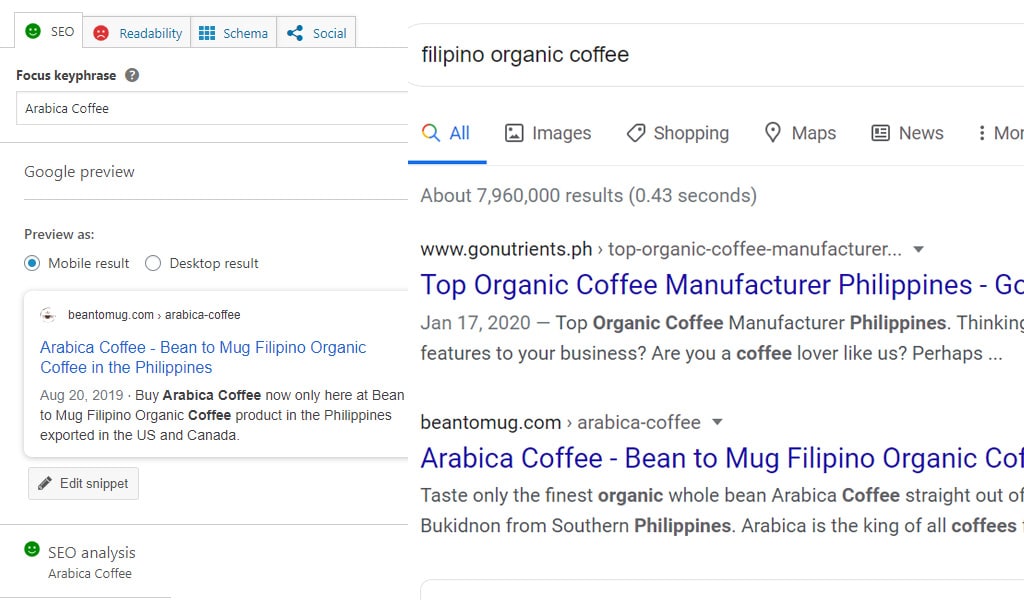
On-page SEO includes optimizing headlines, HTML tags ( the title, meta and header) of each page and optimizing image file names, alt tags and captions.
It is important because on-page SEO helps search engines easily understand the content on your website, what you offer and whether or not it is relevant to what users search for.
Off-page SEO
To put it simply, off-page SEO is what others think about your site. Although backlinks are important, it is not the do-all end-all in off-page SEO.
It is more than that, for example brand mentions like your URL or your brand’s name counts as SEO points to search engine spiders. Off-page SEO all boils down to the authority and value you give in the industry you serve. The more of your peers recognize your expertise in your industry through mentions and recommendations on the internet, the more SEO juice the search engine gets to base their algorithm’s calculation on which position of which page you will come up for keywords in queries the users type in.
SEO experts recommend posting in comments sections of relevant websites/blogs, social media platforms and even forums. Adding your brand and website signatures on comment sections are a great way to create engagement and authority within your niche.
Videos
Gone were the days of which videos are done only by large corporations and traditional media outlets. It is 2024 and YouTube is a house-hold name!
According to Oberlo.com 87% of marketing professionals use videos as a marketing tool. More business brands and personal brands are using videos and podcasts as part of their digital marketing strategy. Because not only is it easier to consume, but also more visually informative, relatable and entertaining.

But what kind of videos should you create for your audience?
There are several types of videos that you can create and share with your audience. But there are 4 main types that you should really consider:
- Informational – These type of videos focus more on current events, everyday questions, scientific facts, history and other informational data that deals with providing fast answers to a question. Although some of them involves education or learning. It is more driven towards providing reliable and fast solutions or quick answers to specific questions.
- Educational – An educational video is more related to teaching and coaching. These types of videos although can also be categorized as informational, is largely confined to helping people learn skills and/or improve their lives through courses, public speaking or online schooling.
- Entertainment – We all love to laugh, be sad, cry and be angry. If a video’s main purpose is to invoke emotions then this will be an Entertainment video. There is no end goal but to make people feel certain emotions.
- Combination – With all the videos on the internet right now, a combination of the types of videos are the ones that provide the most value! These videos are not only driven to teach people how to solve a problem but to provide a long term education and entertains the viewers!
Whether you are a service provider, a product seller or even a consultant; teaching, sharing and entertaining should be your top-most priority in creating a video that gives worth to your audience.
If you help your audience solve a problem or provide information that they are looking for while showing them your personality and keeping them entertained, you will surely be able to engage them in a conversation. You and your brand will stand-out from the rest of the herd.
Social Media

Photo by Austin Distel on Unsplash
The 2nd decade of the new millennium has given us the Social Media Revolution which started in the late 2000s with social media platforms such as Myspace and Friendster leading the way. Back then, Facebook and Twitter did not have as many users as today.
Who would have thought that a decade later it would balloon into the 2 business giants it has become? Now it is a vital part of almost every business’s online marketing strategy and several experts would even argue that having a great Social Media Presence is the deciding factor that could drastically improve your business’s sales and profit margins.
Building your Business’s Social Media Presence
I am sure by now you must have created or thought about creating a Facebook page for your business and invited all your friends to like and follow it. Maybe you have also started an ad campaign to promote your product or service. Still you have not seen a positive effect in your business’s growth.

Most entrepreneurs think that by creating their business’s social media pages, adding a description, uploading a profile and cover photo, and that is it! You are done, your business should take off!
But in truth, it takes a lot of work to optimize a social media page the correct way, put out relevant valuable content and create ads that would entice your audience to listen to what you and your brand has to say.
Aside from Facebook most businesses now a days also use Instagram, Linkedin, Pinterest, Twitter and Youtube to promote social content and improve their social media presence.
You don’t have to join every social media platform right away. You can start with a couple and create useful, compelling and regular content to build your reputation, authority and audience.

Targeting the right audience
When it comes to using social media for your business, targeting the right audience is essential. You need to make sure that the people who follow and like your page are the ones who are in the same industry as you are and/or the ones that would eventually be purchasing your product or service. It is of little to no value to you as an entrepreneur if you ask random people to like and follow your page. Your audience should be the ones who are interested about your service or product and are actively looking for solutions in your industry.
Targeting the right demographics will ensure that your social media channels will have more engagement from your audience which in turn will improve your authority around your niche space.
Correct Ad Strategy
Too many times have we seen ads that are boring and honestly, plain dull. You can still see ads that target you over and over again based on your interest but they just lack the right personality and charisma to draw you in, be curious about what they have to offer and click on it.
Like any marketing material; a great copy, a visually compelling photo or video and a product that helps solve a problem will always win over customers.
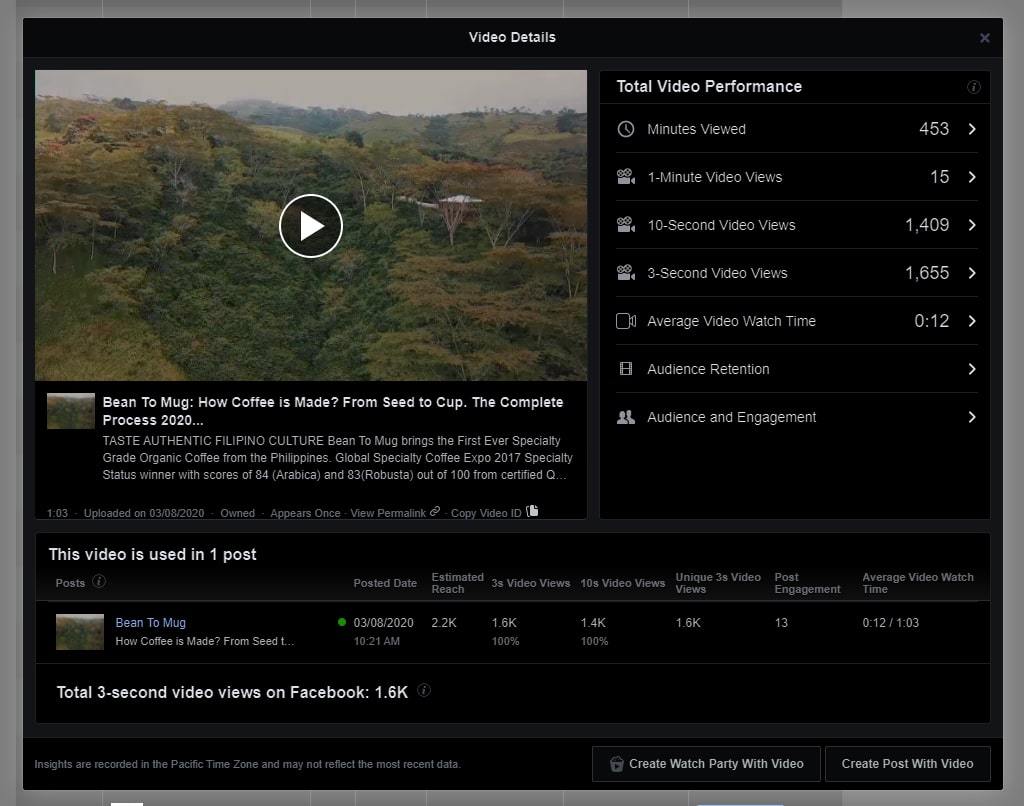
Marketers will also recommend giving out useful resources such as books, mini-courses and video series. By offering incentives to your audience they will not only click on your ad but also opt-in to your email marketing forms which in turn will build your database of prospect clients.
Niching down
You often heard internet marketing gurus talk about “Riches in Niches”. This is relatively true and in my own opinion the best way to start in social media.
One of the proven ways to get more clients is diving into a specific market in your industry that is not saturated with providers and sellers.

Photo by Priscilla Du Preez on Unsplash
An example of this is; if you are a construction contractor and you are trying to tap into a market, you know that most contractors get their clients from real estate companies to build houses. But if you find a niche in your industry that is not that over-populated with service providers such as; the vacation and leisure industry, churches or the government, then you would be able to concentrate on that certain group, help people who need your services, become an authority by creating educational content or dive into public speaking and drive more clients to your business.
For our peers in the creative service industry, you should be able to find a couple of niches that you could offer your service to. Most designers, photographers and writers would want to serve all types of niches but if you find a couple of specific vocations such as blue-collar services like HVAC service providers, plumbing, garage door repairs, cleaning services, and the like you should be able to get more high-value clients. It would be easier for you to improve your reputation in the said area which will help you get more clients.
You can also offer your services to industries such as :
- Education,
- Vacation and Leisure,
- Beauty and Health,
- Engineering,
- Tech,
- Medicine,
- or Any type of trade.
The idea is going deeper into a sub-category of a few lines of business, become an authority or a well-known expert by helping the businesses that are in those few concentrations you serve to make it easier for you to generate leads and close more sales.
Finding your tribe
Facebook groups are a great way to find like-minded people. Although a lot of these groups lately have been over saturated, several still bring value to you as a business. You just need to identify which ones are worth joining and engaging with.
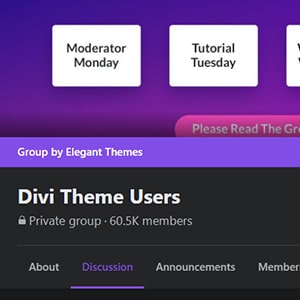
In my more than 10 years experience as a web designer and developer, the moment I started to join specifically niched groups about WordPress page builders such as Divi and Elementor I got to work with more high-paying clients because these groups are not as saturated as let us say a general “Wordpress Designers and Developers Group”.
This scenario can be applied to any industry. So, let us say you have a coffee and tea shop, instead of joining a general group that discusses coffee and tea, you can join specific groups about “organic coffee and tea farming” or “organic farm to café”. This way you filter out other coffee and tea drinkers or enthusiasts who are not really looking for organic farming help, tips, or networking.
Or, if you have a local restaurant that serves vegan burgers and shakes, instead of joining restaurant owner groups you can join groups that discusses healthier fast-food options.
Starting your own community
Aside from getting a Facebook page you can also create your own group as an administrator and add your colleagues, peers, and possible clients into your group to discuss topics within your industry.

Before you do create a group and start inviting people in, you should already have a good amount of content to share like podcasts, articles, Vlogs, and even digital products such as PDF E-books. There is no sense of creating a group and not being able to provide valuable resources and information to the people who joined.
Groups also have different purposes and goals such as hiring and applying for jobs, selling products and services, and coaching.
One of the groups I belong to is called Focus On Your Biz by Stephanie Hudson. The group is for Digital Agencies and Freelancers to discuss the ins and outs of running our type of business.
- Public,
- Closed,
- and, Secret
Public groups are open to the public and you can view all the posts, name, description and members list within the group even without joining them while a closed group requires joining and getting approved by the administrator or invited by a member for you to be able to see the posts, name, description and members list.
Closed groups often require you to answer a few questions to filter out the registration and present the rules within the said group.
A secret group is a very exclusive invisible group where you can only join if the admin invites you to join. Secret groups are often used for coaching programs where students can interact with each other and their mentors.
Bonus: Branding
Doing everything that was written above will surely increase your business’s online presence. But if there is one thing that can make everything successful, professionally lucrative and will give you long term triumph; it is having a masterfully done Brand!

Photo by Uby Yanes on Unsplash
Think about it. All the biggest businesses in the world have a brand that is recognizable, eminent, and emotionally affecting to its consumers. Nike, Coca Cola, Mcdonald’s, Apple, Tesla all have a great Brand Strategy that helps them attract millions if not billions of customers time and time again.
Brands can be broken down into the following:
- Brand Strategy
- Mission
- Vision
- Goals
- Brand Identity
- Logo
- Slogan
- Brand Guidelines and Moodboard
- Colors
- Typography
- Photo preferences
- Design Elements
- Graphics
- Videos
Branding and Marketing goes hand in hand to bring any business success. Think of branding as a unique idea, a message and an impression that makes you and/or your business distinguishable from your competition. While marketing is how to get your brand’s message across to your target audience.
Busines Branding VS Personal Branding
Business Brand
Building a business brand from scratch can take a lot of brainstorming and hard work. Usually a business brand does not have a specific person who embodies the branding as a whole. This is because the focus of the brand is the product itself and the personality is of the brand is not necessarily based-off of a living person.
- Mcdonald’s
- Dunkin Donuts
- Wendy’s
In a few cases it is often the CEO who somehow slips into that position. This is true to brands like:
- Apple – Steve Jobs
- Microsoft – Bill Gates
- Tesla – Elon Musk
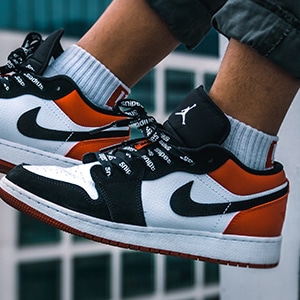
Photo by Danilo Capece on Unsplash
In Nike’s case it was Michael Jordan that brought the brand from NBA’s new kid on the block status into basketball’s premier shoe brand. They hired an already established professional player to promote their brand, sponsored him with his own line of shoes and in return he generated millions if not billions of sales.
Today, the Jordan Brand remains as a subsidiary of Nike, but has its own brand identity. It has its own designers, marketing strategy and corporate structure.
Jordan is a BILLION-dollar brand making him one of United States billionaire athlete and a pioneer in the business of using a personal authority to promote a business brand.
Personal Brand
By now you must have noticed a trend on the internet when it comes to branding. Whether it is in the tech, health, food, sports, or any industry, a more personal representation of a product or service is used to promote brands. Personal brands are often used by entrepreneurs to give a sense of familiarity, personality, and character to a business.
You must be very charismatic, great at speaking and you need to know what you are talking about to gain trust from your audience. Most of the time it all boils down to:
- The connection you have with your audience,
- Your marketing strategy,
- Your portfolio which includes recommendations of your past and present clients and finally,
- Who you are as a person and your backstory.
Here are a few examples of popular personal brands:

Joe Rogan – One of the most diverse brands with over 8 million followers on Youtube. He dabbles in a wide range of topics such as: comedy, astronomy, martial arts, music, culture and psychedelics.

Gary Vaynerchuck – An entrepreneur coach who has over 1 million followers on Twitter. He is the owner of Vayner Media a full-service agency with clientele such as Pepsico, GE, Unilever, Shell and Toyota among many other top-tier brands.

Neil Patel – Neil is one of the leading digital marketing coach and entrepreneur in the Tech space. He teaches Digital Marketing and helps companies such as Amazon, HP and Viacomm. He is the co-founder of NP Digital a global digital marketing agency.
There are pros and cons to building a personal brand.
PROS
- People get to connect with you on a personal level
- You show your face which ads to trustworthiness
- People like to do business transactions or purchase from real people
- Your message evolves and grows as you do
- You can establish authority in your industry faster
CONS
- If you get bad reviews your name will be in jeopardy
- If your name is hard to spell or pronounce people might find it difficult to remember it
- If you have a common name it might get you confused with other people
- Your privacy might be violated from time to time
- You can establish authority in your industry faster
- There is always a price to fame
Which route shall you go as an Entrepreneur?
There is a never-ending debate in the world of branding and digital marketing about creating a business brand versus a personal brand. Or is there?

Photo by Vladislav Babienko on Unsplash
Is it weird that I have not seen any ongoing debate on which is the best way to go when it comes to building brands specially when you are just starting out? Or is it best to start as an employee, add more patches to your belt, gain more knowledge and perhaps earn some respect, recognition from your peers?
I am surprised that I could not find a decent debate on social media or on any branding and digital marketing website about which way to go in creating a brand for you or your business. Most branding experts recommend starting with your own personal brand but is that really the right road to take?
In my own professional opinion it is a balance of both and all depends upon the person who is running a business. If you are the type of person with very good charisma, can speak well, want to connect with your audience and most of all handle the price of being the face of your company; then personal branding might just be the way to go. But if you would rather stay low-key and run your business in the back-end of things then business branding should be your choice.
For Businesses and Entrepreneurs
Starting out in digital marketing can be very overwhelming to do yourself. As an entrepreneur you want to make sure that you are able to spend your valuable time running your business without worrying about trying to build your brand yourself and doing the necessary tasks to promote it online.
Ironclad is here to help you turn your visions about your business into life in the digital world with the help of our branding and digital marketing services.
Let us know on the comments if you have questions, feedback, suggestions or any reactions at all! I’ll make sure to reply and start a conversation.




0 Comments